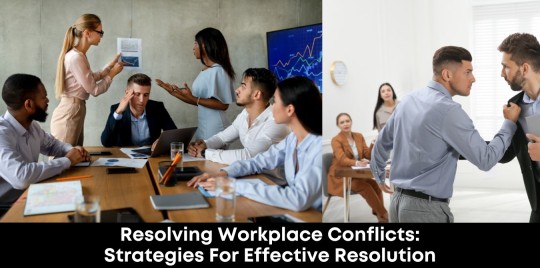#conflict resolution and mediation
Explore tagged Tumblr posts
Text
There seem to be a decent number of people making their Rooks the children of their Hawke or their Warden, but I think the funniest possible "legacy" for a Rook to be is Oghren and Felsi's kid
#'oh yeah my uh. dad fought the Blight. he was a warden.'#'like THE warden???'#'... unfortunately no.'#dragon age#rook is just that good at conflict resolution because they had to play mediator for their parents all the time. rip.#learned to be nice and hyper respectful because its a knee jerk opposition to everything about their dad#oh no im taking it seriously
7 notes
·
View notes
Text
sometimes I think diffusing a bomb would be less stressful than trying to plan something with my family
#no i don't know why you're pissed off no I'm not even sure if it isn't my fault I just need to know which train is should book#i'm fine it's fine#this should could as getting an honorary bachelor mediation and conflict resolution fr#alas#wyatt rambles
2 notes
·
View notes
Text
Not for us to act as Kashmir mediator: UK | India News - The Times of India
Reacting to recent debates on Jammu and Kashmir in the British House of Commons, UK parliamentary under-secretary and Labour MP Hamish Falconer has said that “it is not for the UK to prescribe a solution or act as a mediator.” Representing the British govt, he said: “The (UK) govt’s position is that it is for India and Pakistan to find a lasting political resolution for Kashmir, taking into…
#Breaking news#Google news#Hamish Falconer statement#human rights concerns in Kashmir#India#India news#India news today#India Pakistan Kashmir conflict#Jammu and Kashmir news#Kashmir mediation#Kashmiri people&x27;s wishes#political resolution for Kashmir#Today news#UK government&x27;s position on Kashmir#UK House of Commons debates
0 notes
Text
Expert Mediation Strategies: Transforming Conflict into Productive Conversations and Lasting Resolutions
The Art of Resolution: How Mediation Turns Conflict into Opportunity
Disagreements are a natural part of human interaction, arising in workplaces, business negotiations, and personal relationships. However, conflict doesn’t have to be a roadblock—it can be a stepping stone to stronger communication, better understanding, and long-term success. With Mediation and Conflict Resolution, disputes can be transformed into meaningful discussions that foster collaboration and trust.
At Michael Gregory Consulting, LLC, we specialize in guiding individuals, teams, and businesses through structured mediation processes that turn conflict into a catalyst for growth. Whether navigating workplace tensions, business disagreements, or personal disputes, our goal is to ensure that conversations remain constructive, respectful, and solution-driven.
Why Mediation Matters in Conflict Resolution
When conflicts escalate, emotions often take over, making it difficult to find common ground. Miscommunication, differing perspectives, and unresolved grievances can lead to strained relationships, reduced productivity, and financial losses. Instead of allowing disputes to fester, Mediation and Conflict Resolution provide a proactive approach that helps individuals and organizations navigate disagreements effectively.

Mediation is not about winning or losing—it’s about creating solutions that work for everyone. A skilled mediator facilitates discussions, ensuring that each party’s concerns are heard and addressed. This structured process prevents hostility and encourages fair, balanced resolutions.
Key Strategies for Effective Mediation
At Michael Gregory Consulting, LLC, we implement proven techniques to manage and resolve disputes efficiently. Here are some essential strategies we use to turn conflict into collaboration:
1. Active Listening and Empathy
One of the most important aspects of Mediation and Conflict Resolution is ensuring that all parties feel heard. Active listening involves fully engaging with the speaker, acknowledging their concerns, and responding thoughtfully. This creates a foundation for open and honest communication.
2. Identifying the Core Issues
Often, surface-level disagreements mask deeper underlying issues. By analyzing the root causes of conflict, mediators can address fundamental concerns rather than just immediate symptoms, leading to lasting resolutions.
3. Establishing Common Goals
Instead of focusing on differences, mediation emphasizes shared interests. Finding common ground helps shift the perspective from opposition to teamwork, making it easier to create win-win solutions.
4. Maintaining Neutrality and Respect
A mediator remains impartial, ensuring that discussions remain fair and constructive. Encouraging a respectful environment helps prevent conflicts from escalating and fosters a problem-solving mindset.

5. Implementing Practical and Sustainable Solutions
Mediation is about more than just resolving a single dispute—it’s about creating long-term strategies for better communication and conflict management. We provide individuals and organizations with the tools they need to handle future disagreements effectively.
Turning Conflict into Collaboration
Handled correctly, conflict can lead to stronger relationships, increased trust, and improved teamwork. Through expert Mediation and Conflict Resolution, disputes can be transformed into opportunities for growth and positive change.
If you or your organization need assistance in resolving conflicts, Michael Gregory Consulting, LLC is here to help.
📩 Email: [email protected] 📞 Phone: 651-633-5311 🌐 Learn more: Michael Gregory Consulting, LLC
Let’s work together to create solutions that strengthen relationships and foster success.
0 notes
Text
Having A Successful Florida Mediation | 561.699.0399
Having A Successful Florida Mediation Mediation can make or break your case. If you want a successful outcome, here’s what you need to know! Tip #1: Be Prepared! Attorneys and their clients must be on the same page. If you show up unprepared, you’ll spend the whole day playing catch-up. Know the facts, the law, and your strategy beforehand. Tip #2: Manage Client Expectations Set realistic…
#attorney advice#case preparation#case strategy#client expectations#Conflict resolution#courtroom alternative#Dispute resolution#Florida Attorney#florida law#Having A Successful Florida Mediation#law firm#lawyer tips#legal counsel#Legal disputes#Legal guidance#legal negotiation#legal preparation#legal process#Legal representation#legal strategy#legal tactics#litigation#mediation#mediation strategy#mediation success#mediation tips#negotiation#opposing party#Ryan S. Shipp#Settlement
0 notes
Text
Understanding Its Roots and Pathways to Peace
Conflict is inevitable but not insurmountable. Learn how social psychology unravels the roots of disputes—from social dilemmas to competition—and discover four transformative strategies for peace: contact, cooperation, communication, and conciliation.
Explore the ingredients of conflict and discover the transformative strategies that lead to harmony, collaboration, and understanding. Conflict is an inevitable part of life. From global disputes to workplace disagreements and family squabbles, the roots of conflict often stem from fundamental misunderstandings, competing interests, and misaligned goals. But what creates conflict, and more…
#communication#Conflict Resolution#emotional intelligence#leadership#mediation#peace strategies#social psychology#team collaboration.#workplace harmony
1 note
·
View note
Text
having a sever bout of sidequesting in harvestella that keeps keeping me away form the main story quests in a very #wolmoment kinda situation
#ein getting lumped with the designation of 'traveller' does not help haha#i don't mind it 'cause sidequesting is a continuation of their storylines so it's not bad#but so far it's mostly been either couple spats you're mediating in or help some kids and its not too interesting if that makes sense#like. shiron and lilia dump your guys and date each other lmao#it's more just an issue with quick conflict resolution + everyone agrees with you juice (especially with cres)#i kinda wish there was more pushback on some dialogue options you can pick rather than agreement all the time#but maybe i'm asking too much for the type of game it is idk
0 notes
Text
The Revival of Tech Trade: Importing Computer Parts and Electronics from China to India Post-Border Conflict Resolution with Russia's Mediation-2024
Electronics from China: In the dynamic and politically sensitive landscape of international trade, the relationship between India and China has often been influenced by border conflicts, economic tensions, and geopolitical maneuvering. However, the recent resolution of a prolonged border conflict between the two countries—with Russian President Vladimir Putin playing a pivotal mediating role—has…
#Border Conflict Resolution#China to India#Computer Parts and Electronics#Computer Parts and Electronics from China#Importing Computer Parts#Resolution with Russia&039;s Mediation#Revival of Tech Trade
0 notes
Text
if you saw my post ranting about roommate a being hostile to roommate b for simply communicating his issue with her fragrance plugins causing him migraines, the good news is the RDs are going to have a meeting with the whole suite to mediate a civil conversation 🙏🏻
#roommate problems#college roommate#college student#college#student#mediation#conflict resolution#conflict#bullying#hostility
0 notes
Text
How Sikkim Manipal University is preparing students in ethical mediation
Conflicts at the workplace between employers and employees are inevitable, as most workplaces are in a dynamic state today. However, the way it is managed makes all the difference. Sikkim Manipal Distance Education MBA(SMU) has become a pioneer in a new approach to handling this issue by integrating various ethical mediation techniques as an aspect of its curriculum. This blog post delves into…
0 notes
Text
Resolving Workplace Conflicts: Strategies for Effective Resolution
Resolving Workplace Conflicts: Strategies for Effective Resolution In any workplace, conflicts among employees can arise, leading to tension and decreased productivity. Here are some strategies to effectively resolve disputes: Strategies for Effective Resolution: Open Communication: Encourage open and honest communication between conflicting parties to understand each other’s perspectives and…

View On WordPress
0 notes
Text
Mastering the Art of Conflict Resolution – Fastlane Freedom
Conflict is an inevitable part of human interaction, arising from differences in opinions, values, and goals. Whether it occurs in personal relationships, workplaces, or communities, conflict can disrupt harmony and hinder progress. However, conflict resolution, a skilful and strategic approach to addressing disputes, can transform confrontations into opportunities for growth, understanding, and…

View On WordPress
#communication skills#community building#conflict#conflict management#conflict resolution#conflict resolution strategies#conflict resolution techniques#emotional intelligence#empathy#grow business#interpersonal skills#key benefits of conflict resolution#mediation#methods for conflict resolution#negotiation#personal growth#problem solving#reasons for conflicts#relationships matter#team collaboration#workplace conflict#workplace harmony
0 notes
Text

Work with a Skilled Mediation and Negotiation Specialist
When conflicts arise in business, workplace, or legal matters, having a professional Mediation and Negotiation Specialist can make all the difference. Effective mediation fosters collaboration, resolves disputes efficiently, and helps avoid costly litigation. Whether you’re dealing with contract issues, workplace disagreements, or business negotiations, expert guidance ensures fair and mutually beneficial outcomes. A skilled specialist uses proven techniques to de-escalate conflicts, enhance communication, and create long-term solutions. With extensive experience in conflict resolution, you’ll receive customized strategies tailored to your unique situation. Professional mediation and negotiation services allow all parties to be heard, leading to balanced resolutions that protect relationships and business interests. Instead of letting disputes escalate, trust a mediation and negotiation expert to handle complex situations with professionalism and integrity. Secure positive results and move forward with confidence by choosing a dedicated specialist for conflict resolution.
#Dispute Resolution#Mediation and Conflict Resolution#Conflict Resolution MN#Mediation and Negotiation Specialist#Alternative Dispute Resolution#Conflict Analysis and Resolution#Leadership Keynote Speaker#Negotiation and Conflict Resolution#Mediation in Conflict Resolution#Negotiating with the IRS
0 notes
Text
Resolve Conflicts from Your Pocket: Introducing TheMediator.AI
Are you tired of unresolved conflicts taking a toll on your life? Wish there was a way to mediate disputes without the hassle of scheduling, costs, and awkward face-to-face meetings? Say hello to AI Mediation.
This groundbreaking app is a game-changer in conflict resolution. Whether it's a dispute with a co-worker, neighbor, or even within your family, TheMediator.AI offers an AI-powered platform that’s impartial and confidential. The best part? You can settle disputes right from your phone, in real-time.
Say goodbye to extended arguments and stressful confrontations. Make room for peace and resolution. Check out TheMediator.AI now and step into a world where conflicts get resolved, not ignored.
Find your peace today. 🕊️✨
1 note
·
View note
Text
international mediation training
Maadhyam has been developing and implementing training programs for imparting and promoting conflict resolution skills for ADR practitioners in close collaboration with local and global partners.
#international mediation training#conflict resolution centre#european convention on international commercial arbitration#senior advocate delhi high court#mediation training programs in india#singapore convention on mediation india#delhi high court senior advocates#delhi high court bar association directory#delhi high court directory#straus institute for dispute resolution#arbitration and conciliation act amendment#mediation in conflict resolution#conflict mediation#conflict and resolution#conflict resolution training#conflict and conflict resolution#problem solving and conflict resolution#problem solving conflict resolution#conflict and problem solving#mediation and conflict resolution#conflict resolution mediation#conflict resolution and mediation
0 notes
Text
Why mediation is important in the workplace

Mediation is a process used to resolve conflicts between two or more parties. It involves the use of an impartial third party, known as a mediator, to help the disputing parties reach a mutually acceptable solution.
Workplace mediators are well-trained professionals who can help employees and employers find common ground and come to a resolution that everyone can agree on.
The importance of mediation in the workplace cannot be understated, as it helps prevent workplace disputes from escalating and creating an uncomfortable work environment.
Without mediation, conflicts between employees and employers can fester and cause issues that are difficult to repair. This article delves into the benefits of workplace mediation and how one can implement mediation in the workplace.
Benefits of workplace mediation
Cost-effective
Mediation can prevent legal action, which can be very costly. Instead of hiring lawyers to represent them in court, employers can use a mediator to help them settle disputes before they escalate.
Unresolved conflicts in the workplace can result in high turnover rates, which can be costly for organizations. Mediation helps in preserving the company's talent pool by facilitating effective resolution, improving job satisfaction, and reducing turnover costs.
By utilizing mediation to address and resolve disputes promptly, organizations can minimize the negative impact on employee performance and help restore a harmonious work environment, allowing employees to focus on their work and contribute to the company's success.
Confidentiality
Employees are more likely to be open and honest during mediation if they feel that their conversations are kept confidential. When employees feel safe speaking up, they can provide insights that might otherwise have been kept hidden.
If one party in a mediation feels that the other party will retaliate against them, they are less likely to participate fully in the process. Confidentiality ensures that parties can speak openly without fear of retaliation.
When employees speak openly in mediation, they may provide valuable feedback that can help the organisation identify and resolve issues before they become bigger problems. Confidentiality can help prevent legal or reputational issues down the line.
Timely resolution of conflicts
Mediation is typically less formal than other dispute resolution processes, such as litigation, which can lead to a quicker resolution.
The mediator helps facilitate the discussion between the parties, allowing them to focus on finding a solution rather than getting bogged down in unproductive arguments.
Mediation allows for creative problem-solving and often leads to a win-win solution, which is more likely to be agreed upon quickly.
Once the parties have agreed on a solution, it can be implemented immediately, further reducing the time needed to resolve the conflict.
Improved communication and relationships
Workplace mediation helps employees develop better communication skills that they can apply both inside and outside of the office.
When conflicts arise, they often result in damaged relationships between coworkers, teams, and even entire departments. By addressing and resolving conflicts through mediation, employees are allowed to rebuild trust, respect, and open lines of communication.
Improved relationships lead to a more positive and productive workplace culture. When employees feel heard and valued, they are more likely to feel motivated to work and produce high-quality results.
Increased job satisfaction and productivity
When employees feel like their voices are being heard and that they have some control over their work environment, they tend to be happier and more engaged.
Conflict can be a major source of stress and distraction for employees. When mediation helps resolve conflicts, employees can focus more on their work.
Mediation can help employees develop stronger relationships with their colleagues, which can lead to better collaboration and more effective teamwork.
When conflicts are resolved quickly and effectively, employees can avoid the negative emotions and tension that often arise during prolonged disputes.
How to implement mediation in the workplace
Implementing mediation in the workplace involves identifying conflicts early and providing a safe space for communication. Training employees and managers in conflict resolution is essential.
It’s important to establish clear policies and guidelines and to make mediation an option for employees who feel they need it.
Providing a trained mediator who can facilitate discussions and help parties arrive at a mutually agreeable solution is a key component of successful mediation in the workplace.
Identifying the need for mediation
When there is a communication breakdown like misunderstandings and communication barriers can create conflicts in the workplace. Mediation can help parties communicate their interests, needs, and feelings.
When there is a personality clash where some employees may have different personalities, work styles, or beliefs, which can create friction then mediation can help improve the relationship and find a way to work together harmoniously.
When there is harassment or discrimination which can create a hostile work environment then mediation can help resolve the issue while ensuring the parties involved feel respected and heard.
Choosing a qualified mediator
Look for someone who is certified or accredited in mediation.
Choose someone who has experience in workplace mediation specifically, as it requires a different skill set than other forms of mediation.
Consider the mediator's style and approach to ensure they align with your organisation's culture and values.
Ensure the mediator can remain impartial and neutral throughout the process.
Choose someone who has excellent communication and conflict-resolution skills.
Preparing employees for mediation
Communicate clearly as employees need to know why the mediation is necessary, what it entails, and what they should expect.
Encourage openness and remind employees that they can express themselves freely without fear of retaliation. This can help foster a productive environment for resolving conflicts.
Ensure participation to make sure that everyone involved in the conflict agrees to participate in mediation. This includes management, employees, and any third parties that may be involved.
Creating a mediation agreement
Identify the specific conflict or issue that the mediation will address.
Clarify the goals and objectives of the mediation.
Define the roles of the mediator, employees, and management.
Determine the logistics of the mediation, such as the time, location, and duration.
Establish the confidentiality and privacy expectations of all parties involved.
Conclusion
In conclusion, mediation offers numerous benefits, including cost-effectiveness, timely resolution, improved communication, and increased job satisfaction.
By implementing mediation as a conflict resolution tool, employers can prevent disputes from escalating and create a positive workplace culture.
To successfully implement mediation in the workplace, it is important to identify conflicts early and provide a safe space for communication.
Training employees and managers in conflict resolution, establishing clear policies and guidelines, and providing a qualified mediator are essential steps.
Employees should be prepared for mediation by communicating clearly, encouraging openness, and ensuring their participation.
Choosing qualified workplace mediators who remain impartial and neutral, organizations can facilitate effective discussions and help parties arrive at mutually agreeable solutions.
Creating a mediation agreement that outlines the specific conflict, goals, roles, logistics, and confidentiality expectations is crucial for a successful mediation process.
Ultimately, by embracing workplace mediation, employers can proactively address conflicts, promote healthy relationships, and create a productive and harmonious work environment for all employees.
#mediation#employees#workplace#bullying#discrimination#mediator#employers#manager#conflict management#conflict resolution
0 notes